A Conversation With Chad Hartigan (THIS IS MARTIN BONNER)
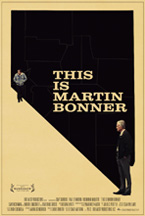 Chad Hartigan’s 2008 debut feature, Luke and Brie Are On A First Date, was a humble little micro-budget affair about a budding romance between young 20-somethings in Los Angeles. Watching This Is Martin Bonner (official website), you’d be forgiven for not believing the same person made these two films. While the budget for This Is Martin Bonner was comparitively small, it sure doesn’t feel like it. Lushly photographed by Sean McElwee and gorgeously scored by Keegan DeWitt, Hartigan’s note perfect drama about late life new beginnings features memorably honest performances from Paul Eenhoorn and Richmond Arquette.
Chad Hartigan’s 2008 debut feature, Luke and Brie Are On A First Date, was a humble little micro-budget affair about a budding romance between young 20-somethings in Los Angeles. Watching This Is Martin Bonner (official website), you’d be forgiven for not believing the same person made these two films. While the budget for This Is Martin Bonner was comparitively small, it sure doesn’t feel like it. Lushly photographed by Sean McElwee and gorgeously scored by Keegan DeWitt, Hartigan’s note perfect drama about late life new beginnings features memorably honest performances from Paul Eenhoorn and Richmond Arquette.
Back in April, as a member of the Independent Visions jury at the 2013 Sarasota Film Festival, my fellow jurors and I awarded Hartigan a Special “Golden Pond” Jury Prize. Distributed by Monterey Media, This Is Martin Bonner opens theatrically in New York City on August 14th and Los Angeles on August 16th, and becomes available through nationwide VOD on August 20th. The afternoon before his film’s NYC release, I spoke to Hartigan on the phone about how his deeply generous film came to light. [UPDATE: It is now available on DVD.]
Hammer to Nail: So, the first NEXT Weekend just wrapped up. How was it?
Chad Hartigan: It was great. It was really, really great. I’ve gone to a lot of festivals this year, some of which have been around for 10/15/20 years. This was the very first time they had [put on] this event, and it was such a well-oiled machine. The audiences were there, the press was there, it was just such a great environment. Sundance really knows what they’re doing in all aspects of the game. I gotta tip my hat to them. I had a great time and it was really effortless.
H2N: Was this your first LA/local screening?
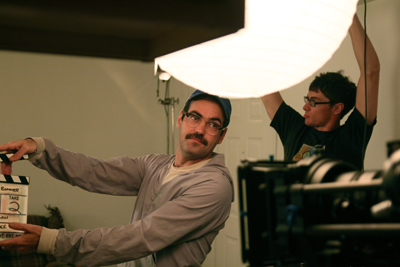 CH: Yeah, it was my LA premiere, so it was a very friendly crowd for me and that was really, really nice. But similar to Sundance, where it was also a little overwhelming. I’ve come to realize—I didn’t know this about myself, but—as much as I want all my friends to come and see the movie at the same time, I really can’t handle it. [H2N laughs] When there are so many people that I want to talk to afterwards and I can’t. It’s a little overwhelming, but I’m really glad that they all got to see it together and that it was under the umbrella of Sundance because they’re responsible for so much of the success the movie’s had.
CH: Yeah, it was my LA premiere, so it was a very friendly crowd for me and that was really, really nice. But similar to Sundance, where it was also a little overwhelming. I’ve come to realize—I didn’t know this about myself, but—as much as I want all my friends to come and see the movie at the same time, I really can’t handle it. [H2N laughs] When there are so many people that I want to talk to afterwards and I can’t. It’s a little overwhelming, but I’m really glad that they all got to see it together and that it was under the umbrella of Sundance because they’re responsible for so much of the success the movie’s had.
H2N: Was This is Martin Bonner in any way a reaction to Luke and Brie Are On A First Date, in that you wanted to consciously veer away from making another movie about 20-somethings? Or was this an idea you’d been kicking around for a while and you felt like the time had come where you were ready to make it happen?
CH: The former. Just in the sense that it takes a lot for me to get excited about an idea. I don’t get very many ideas for movies in the first place, and there are fewer that I get excited about. I finished Luke and Brie, and I was proud of it, but the reception it got was not what I was hoping for. And then there was a period of nothing happening and this idea came to me, based on my dad’s real-life circumstances, about a guy in his late 50s moving to a new town and trying to make new friends. That idea was very exciting to me, and I think partly because it was so different than Luke and Brie. It wasn’t that I specifically didn’t want to make another movie about 20-somethings. That’s not the case. But just the fact that I did naturally and organically come up with an idea that was going to be so different made it more attractive and more worth pursuing.
H2N: Perhaps along those lines, the filmmaking is much more formal here than in Luke and Brie. Was that something that you foresaw from the beginning, or was it written into the script? A specific example of this is that really great 360-degree pan when Travis [Arquette] steps outside of his hotel room.
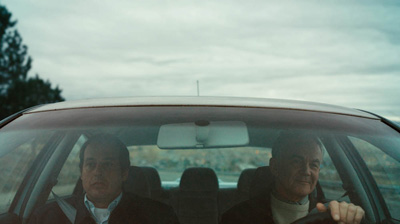 CH: I knew I wanted that shot in the writing. I think a lot of the visual style of the film in general is just a product of what I was watching and what I was really into at the time. The one movie, more than any other, that inspired me and kicked my ass into gear was Hunger. I just kinda stole everything from Hunger. I stole the structure. I stole the 360-degree shot from Hunger—there’s a shot in Hunger where a guard comes into a prison cell and you see all this poop on the wall. I stole everything I could from Hunger. Maybe I shouldn’t be revealing all this…
CH: I knew I wanted that shot in the writing. I think a lot of the visual style of the film in general is just a product of what I was watching and what I was really into at the time. The one movie, more than any other, that inspired me and kicked my ass into gear was Hunger. I just kinda stole everything from Hunger. I stole the structure. I stole the 360-degree shot from Hunger—there’s a shot in Hunger where a guard comes into a prison cell and you see all this poop on the wall. I stole everything I could from Hunger. Maybe I shouldn’t be revealing all this…
H2N: Oh man, you totally should! Because you can say that, and it can be true, but I dare anyone to watch your movie and think of Hunger at all. It’s not like Wes Anderson literally lifting the content of a scene from Wiseman’s High School for Rushmore. Though, having mentioned Hunger, you make me think of another British film. Until you mentioned This is England to me and I was like, duhhhhhh, I had never made the connection between your titles. Was there anything else that you incorporated from This is England beyond the title?
CH: I loved Somers Town. I loved This is England. I loved Hunger. And I loved a lot of the Romanian movies that were coming out: Tuesday, After Christmas and The Death of Mr. Lazarescu. And then also, I saw Roy Andersson’s ‘70s movie A Swedish Love Story. All of these European movies were inspiring me. They just have a more formal, quiet, still style, which, again, excited me [for This is Martin Bonner] because I also felt like it organically fit the story. I was making a movie about a quiet, still guy, and so I got a chance to really do the stuff I like anyways.
But also, I will say there is some truth to consciously moving away from Luke and Brie in the sense that making Luke and Brie was me getting my friends together to see if we could make a movie, and then this time I wanted to get my friends together to see if we could make a really good movie. Which I think is the key difference. Not that we weren’t trying to make Luke and Brie as good as we could, but that was me trying to find out if I could even do it at all. And when I did, then the next step was like, “Alright, well now we’ve really gotta learn to get really, really good.”
H2N: That ties into my next question. All of your collaborators certainly brought their A-games to this one, but Keegan DeWitt’s score just takes the movie to a whole new place. I actually truly think it deserves an Oscar nomination. We posted a great piece about the creation of it back when Martin Bonner premiered at Sundance [“The Composing Process: THIS IS MARTIN BONNER“], but I’m wondering if you could talk about your connection to the score now that the movie is finished and you get to sit back and watch it with general audiences.
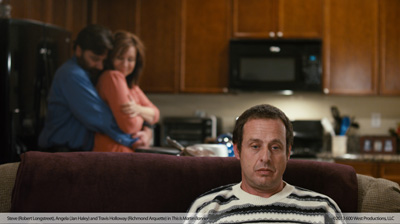 CH: I just think back to when I had a test screening—pretty much the only test screening I ever had with friends, was sort of around this period where I was feeling good. I was like, “Man, we’re just a couple tweaks away from picture lock!” And I was trying to get confirmation of that by having this test screening. I invited six people, a disparate group of friends. They watched it and the consensus was like, “Ahh, I don’t know, it’s missing that thing that really ties it all together. It’s got no voice. It’s got no cohesion. It’s just a bunch of scenes, that are good, in a row, but we’re not really sure if it’s building to anything.” And that, of course, bummed me out to no end. But I went back and we tweaked it a little bit more, and I thought to myself, “Once I get Keegan involved, that’s gonna be the missing piece. That’s gonna be the thing.”
CH: I just think back to when I had a test screening—pretty much the only test screening I ever had with friends, was sort of around this period where I was feeling good. I was like, “Man, we’re just a couple tweaks away from picture lock!” And I was trying to get confirmation of that by having this test screening. I invited six people, a disparate group of friends. They watched it and the consensus was like, “Ahh, I don’t know, it’s missing that thing that really ties it all together. It’s got no voice. It’s got no cohesion. It’s just a bunch of scenes, that are good, in a row, but we’re not really sure if it’s building to anything.” And that, of course, bummed me out to no end. But I went back and we tweaked it a little bit more, and I thought to myself, “Once I get Keegan involved, that’s gonna be the missing piece. That’s gonna be the thing.”
H2N: For that rough cut, were you using no music whatsoever or had you just placed random temp tracks where you knew you wanted music to go?
CH: There was temp music but it was all preexisting opera. That was actually the idea I had for the score. I knew that Keegan wasn’t gonna write actual opera, and I didn’t want any singing on it, but I wanted him to take that as his cue and write his own version of an ‘operatic’ score. Which we talk about in that other article, that he did do that and that it didn’t work. But that was my idea and that was what the temp cut had: all opera music. It sounded better on paper. It was like an idea that only makes sense as an idea. It was confusing people when they were watching the movie.
H2N: So, you didn’t panic about the picture edit after that screening and instead focused your attention on getting the score figured out?
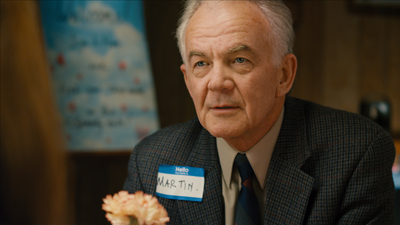 CH: Yeah, we went back in and really tried to examine what they were talking about. We looked at a lot of transitions, and we maybe tweaked a little bit here and there, we maybe did some audio bridges with dialogue for some transitions. But it occurred to me that what people were really missing was an extra element to tie everything together and I thought that would be Keegan’s music and I was right, because when I watch the movie now, the thing that really carries it for me is the music. Which is why, actually, there’s a sort of inconsequential 18-second preamble to the movie, where there are just two title cards. It says “600 West Productions Presents” and “in association with Stay Glorious,” but over a kind of abstract color frame. That’s only in there to introduce the music right away. Keegan wrote an 18-second [cue] that just sets up the vibe of the score so that the first time you’re hearing it isn’t at the 12-minute mark, because we knew it was the thing that was gonna carry us from beginning to end. That was all his idea. He said, “I really feel like I need to get something in at the very-very beginning.”
CH: Yeah, we went back in and really tried to examine what they were talking about. We looked at a lot of transitions, and we maybe tweaked a little bit here and there, we maybe did some audio bridges with dialogue for some transitions. But it occurred to me that what people were really missing was an extra element to tie everything together and I thought that would be Keegan’s music and I was right, because when I watch the movie now, the thing that really carries it for me is the music. Which is why, actually, there’s a sort of inconsequential 18-second preamble to the movie, where there are just two title cards. It says “600 West Productions Presents” and “in association with Stay Glorious,” but over a kind of abstract color frame. That’s only in there to introduce the music right away. Keegan wrote an 18-second [cue] that just sets up the vibe of the score so that the first time you’re hearing it isn’t at the 12-minute mark, because we knew it was the thing that was gonna carry us from beginning to end. That was all his idea. He said, “I really feel like I need to get something in at the very-very beginning.”
H2N: It sounds crazy since it’s only 18 seconds, but that decision perhaps more than any other might have truly saved the movie.
CH: Also, it helps in another way too, which is that the opening scene of the movie was never intended to be the opening scene. And so I shot it as just a regular scene that would come 15 minutes in, but I didn’t really shoot any kind of visual cue to get you into the scene. There was nothing. And that was a big problem. I mean, it was great to start the movie with that scene, it was such a great scene, but it was a problem, like, “How are we gonna get people to settle into their seats for a second?” The music also did that.
H2N: This is a really special case in that Martin Bonner definitely qualifies as a “micro-budget” “festival film” and you can use all those terms to describe it, but it seems to really connect with regular viewers in a way where those limiting labels don’t apply in the way they do to most micro-budget work. I told my parents to check it out in Maryland and they treated it like they’d just gone to the multiplex to watch On Golden Pond or something. Now that you’ve screened it in lots of places outside the States, has the reaction been similar?
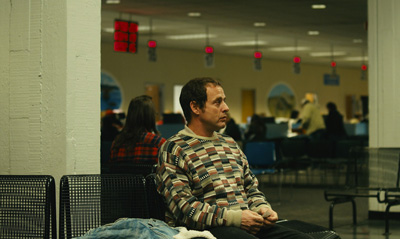 CH: The reactions have been immense and completely surprising, because I thought I was making a movie that nobody would want to see. I know that’s easy for me to say now, but I really did. And then to be able to not only get something like an Audience Award—which I always carried a kind of negative connotation with, like “that’s gotta be the most vanilla, boring movie of the group”—so to get something like that, and then to play somewhere like the Czech Republic or Poland, where they don’t even speak English and they’re reading the subtitles, but they’re getting it and they’re laughing at these little… I mean, there’s not very many jokes in the movie, but there are behavioral things that are very specific to, I don’t know, older men in Reno, Nevada, that they’re laughing at. It’s been really bizarre, amazing, and rewarding. I thought our best hope was to play in places like Poland, actually. I was like, “They’ll get it in Poland!” But the real surprise has been that it murders in Florida, or, like, Winston-Salem, North Carolina. They come out, and they say, “Thank you so much for making a movie about these characters.”
CH: The reactions have been immense and completely surprising, because I thought I was making a movie that nobody would want to see. I know that’s easy for me to say now, but I really did. And then to be able to not only get something like an Audience Award—which I always carried a kind of negative connotation with, like “that’s gotta be the most vanilla, boring movie of the group”—so to get something like that, and then to play somewhere like the Czech Republic or Poland, where they don’t even speak English and they’re reading the subtitles, but they’re getting it and they’re laughing at these little… I mean, there’s not very many jokes in the movie, but there are behavioral things that are very specific to, I don’t know, older men in Reno, Nevada, that they’re laughing at. It’s been really bizarre, amazing, and rewarding. I thought our best hope was to play in places like Poland, actually. I was like, “They’ll get it in Poland!” But the real surprise has been that it murders in Florida, or, like, Winston-Salem, North Carolina. They come out, and they say, “Thank you so much for making a movie about these characters.”
H2N: On paper, this movie has been a major leap forward for you, from world premiering at Sundance to having a theatrical release. Without like ‘jinxing things,’ I’m wondering if you have a sense of it getting you to a place where the next movie is going to fall into place more easily—understanding that it’s always a monstrous battle, of course.
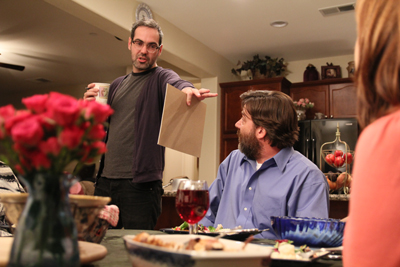 CH: I’m feeling optimistic. I sort of felt, after having the experience we ended up having at Sundance, that it might be a little easier than it is. I got a little carried away. [H2N laughs] You know, “I’ll get hired to direct a movie that I want to direct anyways!” And that’s not necessarily the case. But I have definitely been placed in a different level where I at least have the opportunity to be in the discussion about things. I think I’m still gonna have to generate my own projects, but I’d prefer to do that anyway. I’m just feeling much more optimistic about doing that. Like, I have a script now and already it’s just been easier to get people to take a look at it or consider it, or to visualize it as being a real movie and not just some schmo’s script.
CH: I’m feeling optimistic. I sort of felt, after having the experience we ended up having at Sundance, that it might be a little easier than it is. I got a little carried away. [H2N laughs] You know, “I’ll get hired to direct a movie that I want to direct anyways!” And that’s not necessarily the case. But I have definitely been placed in a different level where I at least have the opportunity to be in the discussion about things. I think I’m still gonna have to generate my own projects, but I’d prefer to do that anyway. I’m just feeling much more optimistic about doing that. Like, I have a script now and already it’s just been easier to get people to take a look at it or consider it, or to visualize it as being a real movie and not just some schmo’s script.
H2N: You alluded to this earlier, but I really do believe that self-confidence is as vital a component of the process as having access to actual financing.
CH: Yeah. Which is essential because I’m not making it easy for myself. The next movie that I want to make takes place in Germany entirely, 40% percent of it’s in German—which I don’t speak—and it stars two 13-year-old kids. So I’m not making it easy on myself. [H2N laughs] But, at the same time, I’m really excited about it, and the people I’ve talked to already are excited about me, so since they’re excited about me and I’m excited about it, it seems like it’s going to be an easier path. I don’t wanna jinx it.
H2N: No jinxing!
— Michael Tully








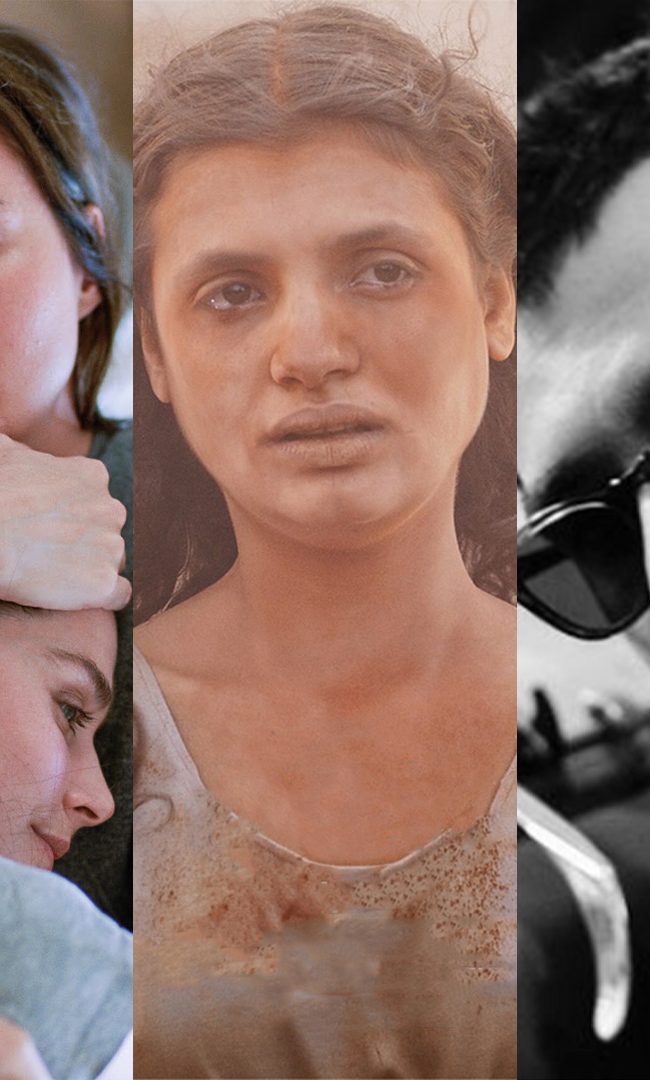



Pingback: HOME VIDEO PICKS – Hammer to Nail
Pingback: THE 2013 HAMMER TO NAIL AWARDS – Hammer to Nail